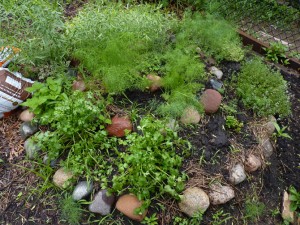Spring Bee Hiving Moon
Kate got a nasty cellulitis on her left arm. Probably from scratches incurred while vigorously pruning and weeding. Spring clean up. It swelled up, got hot and sent her to the urgent care last night, the doctor visiting her own clinic for treatment. They gave her a couple of jabs of rocephin, prescribed some sulfa and sent her home.
After a restless night, she got up and drove out to the arboretum (today) for a class on fruit tree pruning. She’s a Viking, moving past the pain, just as she has from the first days of our life together. I’m no where near as stoic.
Later on today I’ll check on our new colleagues, making sure they’re clustered under the feeder pail, then I’ll leave them alone until next Friday. Next Friday I’ll go in and check for larvae. Finding larvae means the queen has gone to work laying eggs and the colonies will be queen right. After that, it’s the normal hive checks, hive box rotations and following their life as the colony builds up to full strength.
The outdoor season is well and truly underway. Got 2.5 pounds of potatoes from Seed Savers yesterday. I’ll supplement them with sprouts from leftover potatoes of last year’s crop and, possibly, a few from Green Barn, up the road a piece near Isanti. That bed has to be dug and amended.
Also on today’s docket. Move the large limbs I pruned a month ago onto brush piles, clear out the work Kate did yesterday, clean off the AC and do some weed prevention. That’s enough for today.

 have begun to germinate and I plan to plant more bush beans tomorrow if the weather is ok.
have begun to germinate and I plan to plant more bush beans tomorrow if the weather is ok.